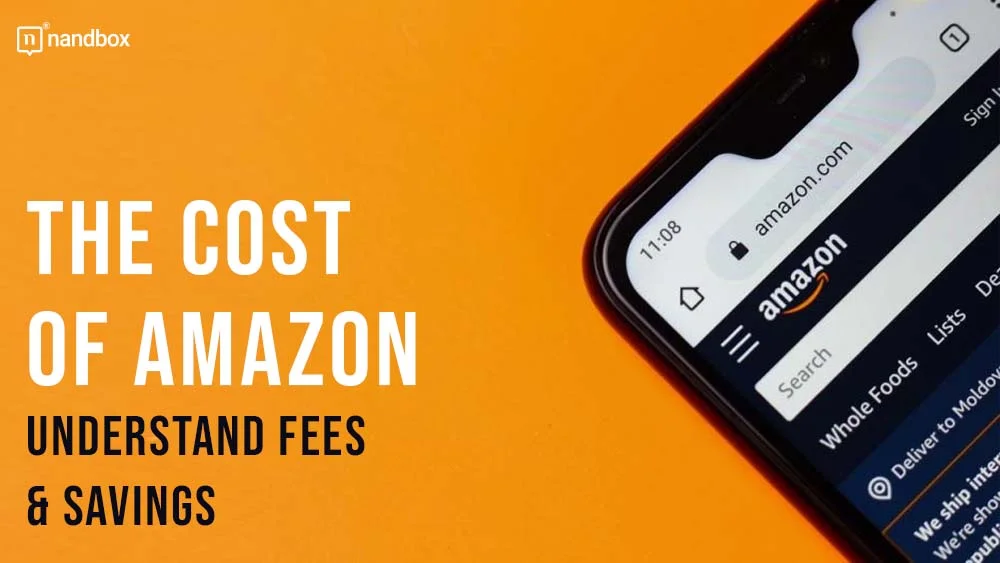It is very competitive to sell on Amazon. To keep up the edge and ensure profits are maximized, many sellers use repricing tools. An automated system is constantly monitoring competitor prices and adjusting your product prices for maximum competitiveness while keeping profits in check.
But what is the price for such wonderful tools? Here, we discuss all the different pricing models by Amazon repricing tools in order to help you to understand what to expect so that you can select the best fit for your business.
1. Pricing Models
Repricing tools use different pricing models. The most common pricing model is the subscription model, in which sellers pay recurring monthly or annual fees. The subscription model often has tiered pricing, where prices increase with sales volume or inventory size. Subscription models are predictable and easy to budget for, but it can be expensive for large-volume sellers.
Usage-based pricing models charge fees on specific usage metrics such as products repriced, price adjustments, or total sales volume generated through the tool. It may thus prove to be a cost-effective option for low-volume sellers, who pay only for services utilized. Costs might still vary substantially. Depending upon market conditions and performance.
Some repricing tools use a hybrid model, which uses a combination of subscription fees and usage-based charges. For example, a seller could pay a base subscription fee and then be charged extra per 1,000 price adjustments. The hybrid approach is flexible and can meet different needs. But understanding and predicting costs can be more complicated.
Most repricing tool providers offer free trials so that sellers can try the features of the tool and understand whether it will fit the specific needs of the business before opting for the paid plan.
2. Factors Influencing Cost
The level of sophistication and features that the tool can offer plays a big role in pricing. A tool that can have a sophisticated algorithm for analyzing a lot of data, such as historical sales trends, competitor pricing, and fluctuations in demand, will typically cost more.
Besides, the ones that seamlessly integrate with other key selling platforms like eBay, Walmart, and Shopify or provide powerful analytics dashboards that offer more detailed performance metrics may be able to fetch a higher price.
Another reason why sales volume is one of the significant determinants of cost is that many repricing tools use tiered pricing models, whereby the cost to the seller increases as sales volume increases. This might be true because, in order to maintain business, any high-volume seller would need additional processing from the provider offering the repricing tool.
The other factor is the seller’s inventory size. Larger inventories will have higher computation requirements and, consequently, may involve higher costs to handle and reprice such a large amount of inventory.
Lastly, customer support from the tool provider significantly impacts the overall cost.
Generally, standard plans come with basic support, which is either email or chat support. Dedicated account managers, priority support channels, and even phone support are chargeable. A seller needs to clearly know what his or her business requires in order to get just the right kind of assistance in a support plan and stay within budget.
3. Cost Considerations
When evaluating the cost of a repricing tool, several key factors need to be considered to ensure a wise investment.
The ROI is paramount. Sellers need to analyze their current sales data and estimate the potential revenue increase and improved profitability that the repricing tool can deliver. This analysis must take into account increases in sales volume, improvements in the average selling price, and reduced manual efforts in pricing. By calculating the potential return on investment, sellers will be able to determine if the cost incurred for the tool is justified by the financial benefits accrued.
Another significant factor here is competitive advantage. An effective repricing tool could provide a massive competitive advantage in the highly competitive Amazon marketplace. By automatically updating prices in real-time. Sellers can outmaneuver their competition, win the Buy Box more often, and ultimately improve their market share.
The budget needs to be taken into consideration carefully. Sellers should establish a realistic budget for repricing tools and decide on a plan that meets their financial capabilities. Do not overspend on extra features that are not really needed for their business purposes.
Lastly, long-term business goals must be put in mind. Sellers should choose a repricing tool that can grow with your business. A scalable tool should be able to adjust as the volume of sales increases as does the size of your inventories for long-term effectiveness.
4. Finding the Right Tool
With proper research and review, selecting the right re-pricing tool is an onerous task. Sellers should thoroughly research different repricing tools, comparing their features, pricing models, and customer reviews. This research should include an evaluation of the tool’s algorithms, integration capabilities, reporting features, and customer support options.
Taking advantage of free trials is highly recommended. Free trials allow sellers to test the tool’s functionality, evaluate its ease of use. And determine if it meets their specific needs. This hands-on experience might be of great importance and help the sellers decide whether they should work with that tool or not.
The reviews by customers are worth a read because they offer insights into others’ experiences.
By reading reviews at Amazon, G2, and Capterra, sellers can gain an improved understanding of the strength and weakness of different tools and potential issues or concerns about them.
Last but not least, contacting sales representatives to get a personal quotation for the prices and then discussing individual needs is very recommended. Sales representatives usually provide detailed information regarding the pricing plan, answer specific questions on this matter, and suggest recommendations based on the individual’s needs from the seller.
All these considerations with proper research will allow the seller to find the most suitable repricing tool for his business and make a high return on investment.
Conclusion
The price of Amazon repricing tools varies extensively, depending on the type of pricing model, features, sales volume, and inventory size. A careful consideration of these factors, along with the calculation of ROI. Will lead sellers to choose a tool that best matches their budget and long-term business goals. This way, investment in a repricing tool will help them achieve maximum profitability and significant competitive advantage in the dynamic marketplace of Amazon.
nandbox App Builder
Amazon’s fees include Prime subscription expenses, seller fees, and additional charges for services such as fulfillment. While these expenses can accumulate, they also provide tremendous value in terms of convenience, consumer reach, and quick delivery possibilities. Understanding these fees is critical for firms looking to maximize their profits on the platform. With the nandbox App Builder, businesses can construct their own e-commerce mobile apps. Minimizing their reliance on third-party platforms such as Amazon. This enables businesses to retain more earnings, build direct consumer contacts, and adapt the buying experience to their brand, providing a low-cost alternative to traditional marketplaces.





